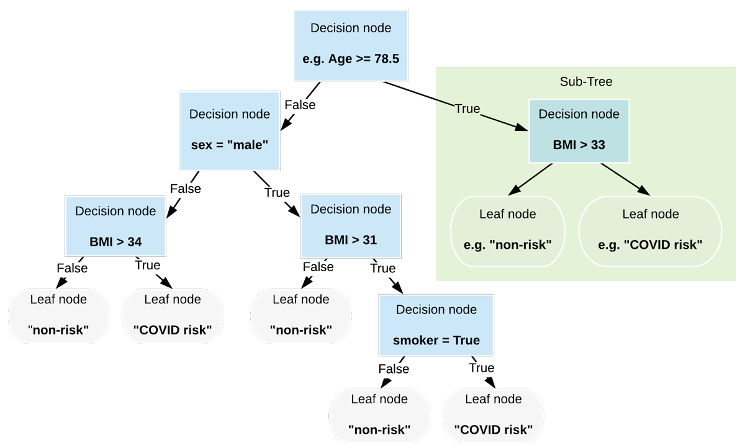There is no doubt that the COVID-19 pandemic changed the world. It likely changed your industry or academic field as well, and students can benefit from discussing COVID-related disruptions and innovations in light of key concepts they are learning in their studies.
Incorporating current events into instructional materials and classroom discussions is a powerful way to improve student engagement. It connects students to what is happening in the world and in their personal lives, broadens their perspective, and deepens their appreciation for the relevance of what they are learning. Instructors and learning resources play an important role in informing society’s future leaders so they can make wise decisions that impact themselves and their communities.
The COVID-19 pandemic provides a relevant, compelling, and important case study in many different academic fields. Let’s take a look at three ways MyEducator authors have used the pandemic to teach important concepts in their chosen area.
1. Purchasing and Supply Chain Management

Some events in the supply chain world serve as cautionary tales, such as the trade-off between cost savings and risk of inventory shortages in lean methodology. But in between the many difficulties of the pandemic were some standout successes that will inform supply chain education for the future. Professors say that rising supply chain specialists will need skills in supply chain mapping, manufacturing, and risk management to thrive in a post-pandemic work environment.
New skills and knowledge will be required to adequately prepare supply chain students for the future. Textbook authors and instructors alike saw current events as key to student learning during this time and seamlessly incorporated current events into their instruction.
One case study in Purchasing and Supply Management, published by MyEducator, illustrated how continuity planning can provide a huge competitive advantage through risk mitigation:
In the early stages of the COVID-19 pandemic, one retailer was a little quicker to act than its rivals: H-E-B, a grocer headquartered in Texas. H-E-B had begun communicating with its Chinese suppliers as early as January 2020, running simulations in early February to analyze how a possible pandemic would affect its operations. H-E-B closely monitored how the Chinese government and the public reacted to the outbreak.
This early awareness gave H-E-B leadership an idea about how to respond when COVID began to afflict America. Here are some of H-E-B’s early initiatives, which were put in place days or weeks before rivals responded.
-
Store hours were cut to give employees more time to restock the shelves. Pay was increased $2 per hour to keep employees coming to work.
-
Purchase limits were imposed on high-demand products ranging from beef to toilet paper.
-
Social distancing was quickly adopted, including in H-E-B’s company-owned meat-packing plants. You may remember that many early outbreaks occurred in meat-packing plants.
-
A coronavirus hotline was set up so employees could call for screenings and health information.
H-E-B’s quick response and overall preparedness were no fluke. You see, H-E-B has long possessed a strong risk management culture. In fact, H-E-B had developed a pandemic response action plan in 2009 in response to the H1N1 (commonly known as swine flu) outbreak. The result: H-E-B was lauded as a model for foresight, planning, and competence.
By learning from the past and present, students are prepared to become competent, innovative purchasing and supply chain professionals for the future.
2. Communications

Technical Communication initiates a discussion about long-term shifts in the way we work due to the pandemic. Many different industries have undergone a digital transformation where employees now work from home at least part of the time. This hybridized, “virtual-first” way of working requires an increased investment in communications technology and adaptive technical communication. Experts in technical communication will be a crucial part of an increasingly global community. In fact, “everyone belonging to an organization should become an internal communications expert, and graduates in technical communications can lead the way.”
In order to add value to an organization as a technical communication expert, communication professionals can work side by side with managers to implement technology solutions that enable multiple modes of working, develop good interpersonal communication skills such as active listening and collaboration, and build a culture of trust and organizational belonging.
This resource emphasizes the value of technical communication as a key skill during and after the pandemic, helping students see the value of these skills during the pandemic and understand the importance of adapting to changing technology and communication needs going forward.
3. Data Analytics and Machine Learning

This example connects with the very real evidence of COVID risk in the world outside the classroom. Students see how they can use Python to create decision tree visualizations and perform statistical analyses that render these classification models useful in everyday life.
All three of these examples provide context that keeps lesson plans up to date and personalizes the learning experience for students. The COVID-19 pandemic affected just about every area of our lives, and we can learn a great deal from the successes and failures of the last couple of years. Teaching about the effects of and responses to the pandemic in your field can help propel us to greater innovation for the future.
Sources
Brown University. Study Shows How Machine Learning Could Improve COVID-19 Predictive Models. December 1, 2021.
Challener, Douglas W., Sean C. Dowdy, and John C. O’Horo. Analytics and Prediction Modeling During the COVID-19 Pandemic. Mayo Clinic Proceedings, September 2020, 95(9S): S8–S10.
Leonard, Matt. How the Pandemic Is Changing Supply Chain Education. Supply Chain Dive. September 22, 2020.
McClain, Colleen, Emily A. Vogels, Andrew Perrin, Stella Sechopoulos, and Lee Rainie. The Internet and the Pandemic. Pew Research Center, September 1, 2021.


